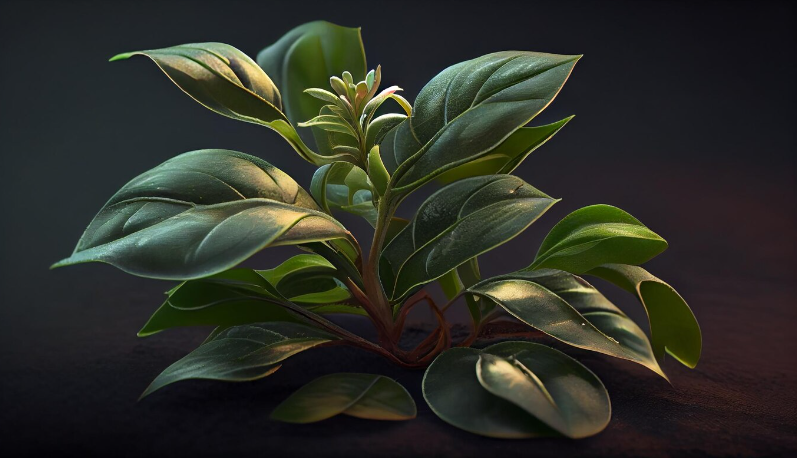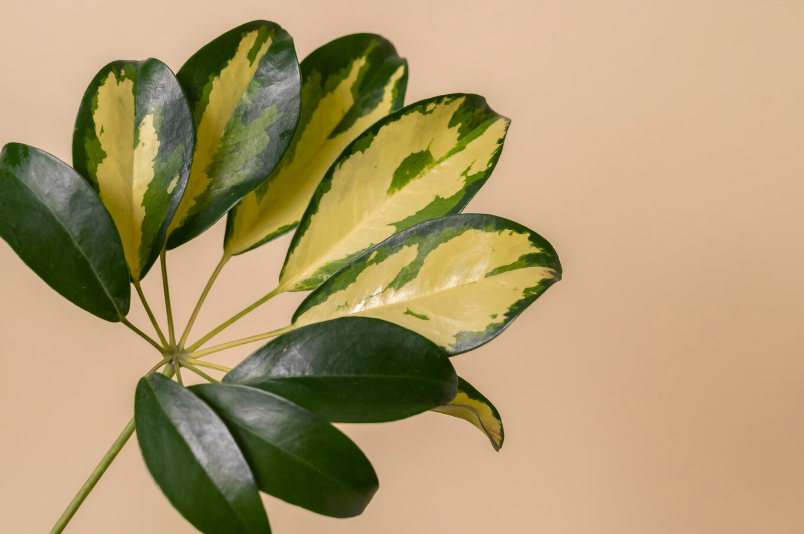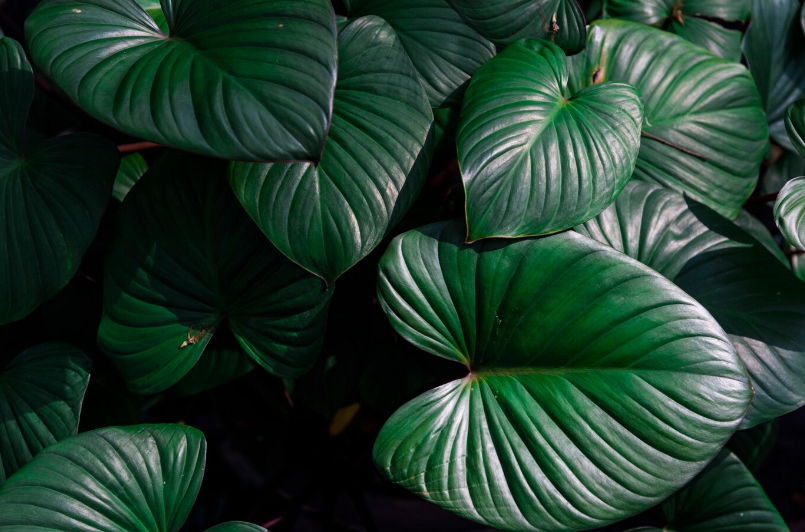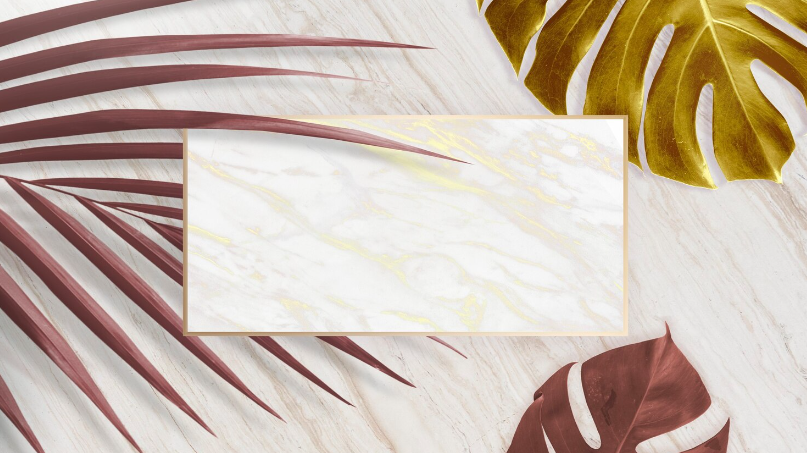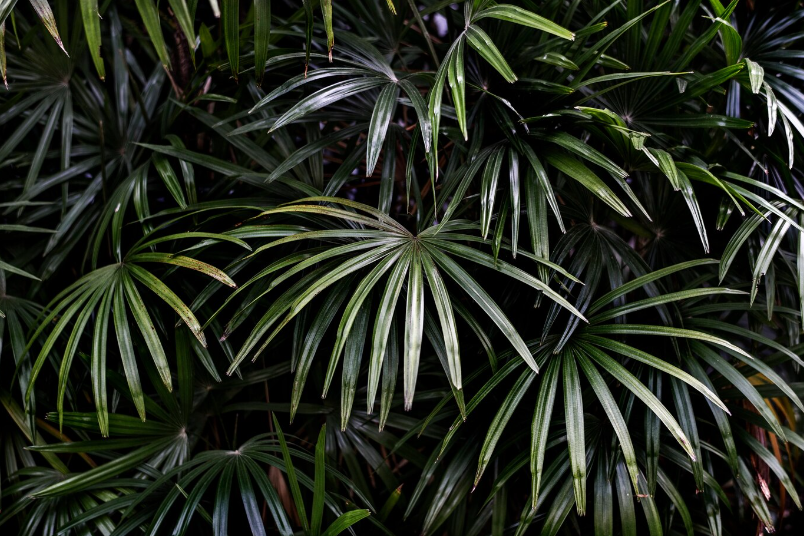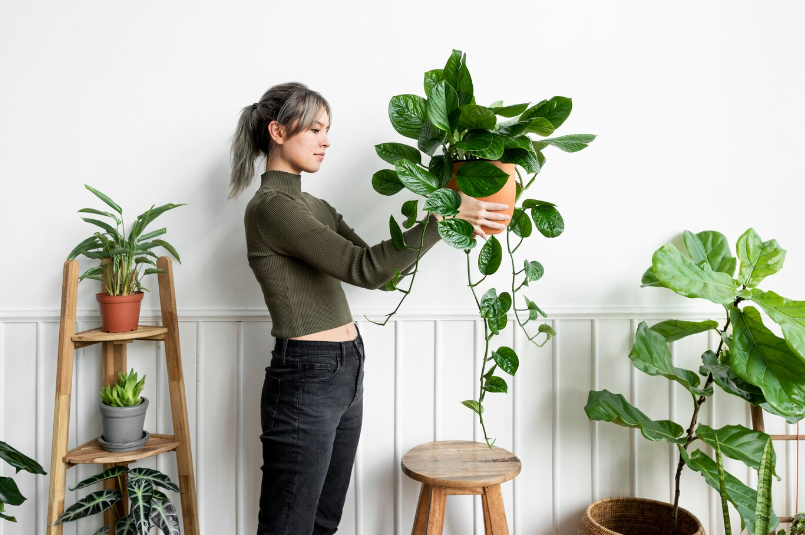Philodendrons Vs Pothos: Spotting the Differences
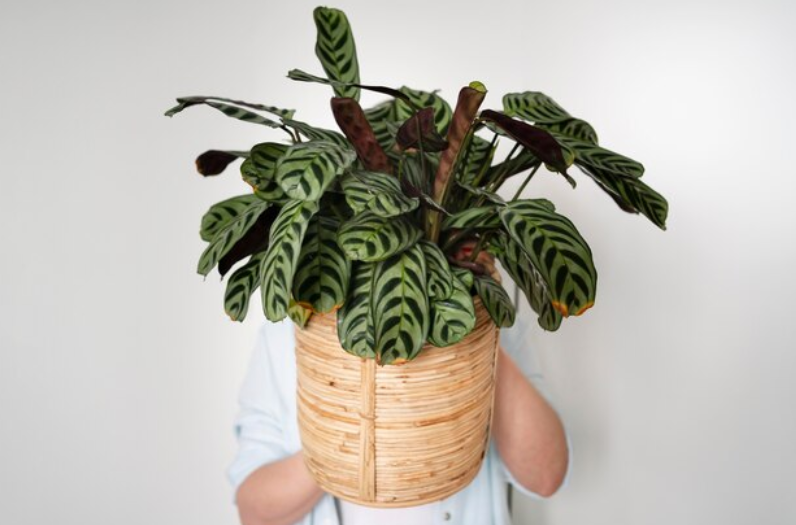
When it comes to indoor plants, Philodendrons and Pothos are two popular choices that can add a touch of green to any space. These two plants may look similar at first glance, but there are some key differences that set them apart. Understanding these differences can help you choose the right plant for your home or office.
Philodendrons are known for their large, glossy leaves and vining growth habit. They are native to the tropical regions of the Americas and thrive in warm, humid environments. Philodendrons come in a variety of colors and leaf shapes, ranging from deep green to variegated. Some popular types include the Heartleaf Philodendron, the Split-leaf Philodendron, and the Philodendron Brasil.
Pothos, on the other hand, are often mistaken for Philodendrons due to their similar vining growth habit. They also come in various leaf colors and shapes, but they tend to have smaller leaves compared to Philodendrons. Pothos are native to the tropical regions of Southeast Asia and are known for their resilience and ability to tolerate lower light conditions. Some common varieties include the Golden Pothos, Marble Queen Pothos, and Neon Pothos.
While both Philodendrons and Pothos are relatively easy to care for, they have different water and light requirements. Philodendrons prefer bright, indirect light and well-draining soil. They should be watered when the top inch of soil feels dry to the touch. Pothos, on the other hand, can tolerate lower light conditions and prefer to dry out slightly between waterings. They are also more forgiving when it comes to overwatering.
Whether you choose a Philodendron or a Pothos, both plants will bring beauty and a breath of fresh air to your indoor space. So, next time you’re shopping for indoor plants, remember to look closely and spot the differences between these two popular choices.
Philodendrons vs. Pothos: An Overview of Differences
If you are a plant enthusiast, you may have come across the popular indoor plants known as philodendrons and pothos. While these two plants may look similar at first glance, there are actually several key differences between them. By understanding these differences, you can choose the plant that best suits your needs and preferences.
1. Leaf Shape: One of the easiest ways to tell philodendrons and pothos apart is by examining their leaf shape. Philodendron leaves are typically larger and have a heart-shaped or arrowhead shape, while pothos leaves are smaller and have a more elongated, oval shape.
2. Leaf Color: Another noticeable difference is the leaf color. Philodendrons come in a variety of shades of green, ranging from light to dark, and some species may have variegated leaves with splashes of white or yellow. Pothos, on the other hand, have leaves that are predominantly green but may have variegation with patches of white or yellow.
3. Growth Habit: Philodendrons and pothos also differ in their growth habit. Philodendrons are climbers and have aerial roots that allow them to cling to surfaces and grow vertically. Pothos, on the other hand, are trailing plants and prefer to hang or cascade down from their containers.
4. Light Requirements: When it comes to lighting conditions, philodendrons and pothos have different preferences. Philodendrons prefer bright, indirect light and can tolerate some shade, while pothos can thrive in both low light and bright, indirect light conditions.
5. Care: Both philodendrons and pothos are relatively easy to care for, making them popular choices for beginner plant enthusiasts. They both prefer well-draining soil and should be watered regularly, allowing the soil to dry out slightly between waterings. However, it’s important to note that overwatering can be damaging to both plants.
By understanding these key differences, you can select the plant that fits best with your indoor environment and personal preferences. Whether you choose a philodendron or a pothos, both plants can add beauty and greenery to your home or office space.
Key Visual Differences Between Philodendron and Pothos Leaves
While both philodendrons and pothos belong to the same family, Araceae, there are some key visual differences between their leaves that can help you correctly identify each plant.
- Leaf Shape: One of the most noticeable differences is the shape of the leaves. Philodendron leaves are generally larger and broader, often heart-shaped or deeply lobed. Pothos leaves, on the other hand, are narrower and elongated, with a more oval or lanceolate shape.
- Leaf Texture: Philodendron leaves have a smooth and glossy texture, while pothos leaves have a slightly rougher texture, particularly along the edges.
- Leaf Color: Both plants exhibit a wide range of leaf colors, but there are some differences in the common color patterns. Philodendron leaves can be green, variegated with shades of yellow, cream, or white, or even have red or purple undertones. Pothos leaves are often variegated with shades of green and yellow, but they can also be solid green.
- Growth Pattern: Philodendron leaves tend to grow in an upright manner, with the new leaves emerging from the center of the plant. Pothos leaves, on the other hand, grow in a trailing or climbing manner, with new leaves appearing from the ends of the vines.
By paying attention to these key visual differences, you can easily distinguish between philodendrons and pothos, ensuring that you can properly care for and enjoy these beautiful plants in your home. Delve into the world of rare varieties like the White Princess Philodendron and their unique features.
Growth Patterns: How Philodendrons and Pothos Differ
Understanding the growth patterns of plants is crucial for their care and maintenance. In the case of philodendrons and pothos, their growth patterns exhibit some key differences that can help distinguish between the two.
Philodendrons are known for their upright growth habit, with long, trailing vines that can extend several feet in length. These vines often have large, lush leaves that can vary in shape and size, depending on the specific species. As they grow, philodendrons will produce aerial roots that can attach to trees or other surfaces for support and stability.
Pothos, on the other hand, have a trailing growth habit, with vines that cascade down from their planting location. Their vines are typically long and can grow to be quite substantial, reaching up to 10 or more feet in length. Pothos leaves are heart-shaped and come in various shades of green, with certain cultivars featuring variegated foliage.
While both philodendrons and pothos are vining plants, the main difference lies in their growth habits. Philodendrons grow upright and produce aerial roots, allowing them to climb and attach to surfaces, while pothos have a trailing nature and cascade down from their containers.
Understanding the growth patterns of philodendrons and pothos can help in providing proper care, such as pruning and providing support for climbing plants. Whether you prefer the vertical growth of philodendrons or the trailing nature of pothos, both plants can add beauty and greenery to any indoor space.
Varieties and Confusion: Philodendron Cream Splash vs. Pothos
When it comes to indoor plants, Philodendrons and Pothos are often mistaken for each other due to their similarities in appearance. One variety that adds to the confusion is the Philodendron Cream Splash, which bears a striking resemblance to the Pothos plant.
The Philodendron Cream Splash is a cultivar of the Philodendron plant that features variegated leaves with creamy yellow and green patterns. These patterns can vary, with some leaves exhibiting more cream coloration than others. The Cream Splash variety is highly prized by plant enthusiasts for its unique and eye-catching foliage.
On the other hand, Pothos, also known as Epipremnum aureum, is a separate species that is often mistakenly labeled as a Philodendron. Pothos plants have heart-shaped leaves that are typically solid green but can also display variegation. The most common Pothos variety, known as “Golden Pothos,” features leaves that are predominantly green with splashes of yellow.
While both the Philodendron Cream Splash and Pothos share similarities in their variegated foliage, there are some distinguishing factors between them. One notable difference is the shape of their leaves – Philodendrons have more triangular-shaped leaves, while Pothos leaves are more heart-shaped.
Another notable difference is their growth habit. Philodendrons tend to have a more upright and bushy growth pattern, while Pothos plants have trailing vines that can grow quite long if left to cascade down from a hanging basket or shelf.
It is important to properly identify these plants, as their care requirements can differ. Philodendrons are typically more demanding in terms of light and humidity, while Pothos is known for its resilience and ability to tolerate lower light conditions.
So, next time you come across a plant with variegated leaves, pay close attention to its leaf shape and growth habit to differentiate between the Philodendron Cream Splash and Pothos. While they may look similar at first glance, these plants have their own unique characteristics that make them stand out in any indoor jungle.
Identifying Characteristics of Philodendrons
Philodendrons are tropical plants that are known for their large, lush leaves and trailing vine-like growth habit. Here are some key characteristics that can help you identify a philodendron:
- Leaf Shape: Philodendrons typically have large, heart-shaped leaves that are smooth-edged or have slight indentations. Some varieties may have leaves that are more elongated or spade-shaped.
- Leaf Texture: The leaves of philodendrons are typically smooth and glossy, giving them a shiny appearance. This texture helps to collect and retain moisture in their natural habitat.
- Leaf Color: Philodendron leaves come in various shades of green, ranging from dark, deep greens to vibrant, light greens. Some varieties may have variegated leaves with splashes or streaks of different colors.
- Growth Habit: Philodendrons are climbing or trailing plants that can reach impressive lengths. They often have aerial roots that help them attach to surfaces and climb upward.
- Vine-Like Stems: Philodendron stems are usually thick and woody, and they can grow long and vine-like. These stems often trail or climb and can be easily trained to grow on support structures.
- Split Leaves: Some philodendron varieties have leaves that are deeply lobed or split, giving them a unique and attractive appearance. These split leaves are often referred to as “cut-leaf” or “split-leaf” philodendrons.
By observing these identifying characteristics, you should be able to differentiate philodendrons from other plants, such as pothos, which have their own distinct features.
What Sets Philodendron Leaves Apart?
When it comes to distinguishing between philodendrons and pothos, one of the key factors is the appearance of their leaves. Philodendron leaves are known for their large size and unique shapes, which can vary depending on the specific species.
One distinguishing feature of philodendron leaves is their heart-shaped or arrow-shaped design. These leaves have a wide base that tapers to a point, giving them a distinctive look. Some philodendrons also have leaves that are deeply lobed or divided, adding to their visual appeal.
In addition to their shape, philodendron leaves are often glossy and have a leathery texture. This gives them a shiny, smooth appearance and makes them feel thicker than the leaves of pothos plants.
Another characteristic that sets philodendron leaves apart is their ability to change color. Many philodendrons have leaves that start off as bright green when they are young and gradually darken to a deeper shade as they mature. This color-changing feature adds to the overall beauty and interest of the plant.
One thing to note is that philodendrons are generally more diverse in leaf shape and size compared to pothos plants. This means that there is a wider range of options when it comes to choosing a philodendron with leaves that suit your aesthetic preferences.
In summary, the unique shape, glossy texture, color-changing ability, and larger variety of leaf shapes and sizes are what set philodendron leaves apart from those of pothos plants.
Unique Philodendron Varieties and Their Traits
Philodendrons are known for their diverse shapes, sizes, and patterns. Each variety has its own unique characteristics and traits. Here are a few notable philodendron varieties:
1. Philodendron Birkin: This variety stands out with its stunning white pinstripes on dark green leaves. It’s a compact plant, making it perfect for smaller spaces.
2. Philodendron Pink Princess: With its dark green foliage and vibrant pink variegation, this variety is a popular choice among plant enthusiasts. It requires bright, indirect light to maintain its striking colors.
3. Philodendron Lemon Lime: As the name suggests, this variety features bright lemon and lime-colored leaves. It can tolerate low light conditions, making it a versatile choice for indoor spaces.
4. Philodendron Micans: This variety has velvety, heart-shaped leaves in shades of green and bronze. It’s a trailing philodendron, perfect for hanging baskets or cascading down shelves.
5. Philodendron Moonlight: Known for its vibrant yellow foliage, this variety adds a pop of color to any room. It prefers bright, indirect light and moderate watering.
6. Philodendron Brasil: This popular variety has heart-shaped leaves with green and yellow variegation. It’s an easy-care plant that can tolerate a wide range of light conditions.
7. Philodendron Silver Sword: With its elongated, silver-green leaves, this variety adds a touch of elegance to any space. It thrives in bright, indirect light and prefers slightly moist soil.
8. Philodendron Red Emerald: This variety has eye-catching glossy leaves in shades of dark green and red. It requires bright, indirect light to enhance its vibrant colors.
9. Philodendron Imperial Red: With its deep burgundy foliage, this variety creates a striking focal point in any room. It needs bright, indirect light to maintain its rich coloration.
10. Philodendron Black Cardinal: This unique variety has dark purple leaves that almost appear black. It’s a stunning choice for adding a dramatic touch to your indoor jungle.
These are just a few examples of the incredible variety that philodendrons offer. Whether you prefer bold and colorful or subtle and understated, there’s a philodendron variety out there to suit every plant lover’s taste.
Monstera Deliciosa vs. Philodendron: Spotting the Differences
Monstera Deliciosa and Philodendron are both popular houseplants known for their lush green foliage and ability to thrive in low-light conditions. While they may look similar at first glance, there are several key differences that set them apart.
| Monstera Deliciosa | Philodendron |
|---|---|
| Large, perforated leaves with unique split patterns | Smaller, solid leaves with a heart or arrow shape |
| Leaves grow in a more structured, upright manner | Leaves grow in a more trailing, vine-like manner |
| May produce edible fruit, known as Monstera fruit or Swiss cheese fruit | Does not produce edible fruit |
| Requires bright, indirect light to promote optimal growth | Can tolerate lower light conditions, but prefers bright, indirect light |
| Thrives in well-draining soil and requires regular watering | Thrives in well-draining soil and requires regular watering |
| Can grow to be quite large, with mature plants reaching heights of up to 10 feet | Generally stays smaller, with mature plants reaching heights of around 3-6 feet |
Despite these differences, Monstera Deliciosa and Philodendron are both relatively low-maintenance plants that can add a touch of tropical beauty to any indoor space.
The Distinctive World of Pothos Plants
The world of pothos plants is a fascinating and distinctive one. These plants are highly popular among indoor gardening enthusiasts due to their ease of care and ability to thrive in various conditions.
One of the most distinctive features of pothos plants is their unique foliage. Their leaves come in a variety of shapes and colors, ranging from heart-shaped to elongated and variegated to solid green. This diversity adds an element of visual interest and allows for endless possibilities when it comes to decorating with pothos plants.
In addition to their striking foliage, pothos plants also have a unique way of trailing and climbing. They possess aerial roots that allow them to attach themselves to surfaces and grow upward. This characteristic makes them perfect for hanging baskets or for training along windowsills or shelves.
Pothos plants are also known for their air-purifying properties. They have been proven to remove toxins such as formaldehyde and benzene from the air, making them a healthy addition to any indoor space. Not only do they add beauty, but they also contribute to a cleaner and more pleasant environment.
Another distinctive aspect of pothos plants is their ability to thrive in low-light conditions. While most houseplants require bright, indirect light, pothos plants are more adaptable and can tolerate low-light environments. This makes them an excellent choice for offices or rooms with limited natural light.
Lastly, pothos plants are known for their resilience and hardiness. They are forgiving plants that can withstand a fair amount of neglect and still manage to thrive. This makes them an excellent choice for those who are new to gardening or for those who may not have a green thumb.
In conclusion, the world of pothos plants is full of distinctive features and qualities. From their unique foliage to their trailing and climbing abilities, air-purifying properties, adaptability to low-light conditions, and resilience, it’s no wonder why pothos plants remain a popular choice among indoor gardeners.
Recognizing a Pothos: Visual Identification Tips
If you’re trying to distinguish between a philodendron and a pothos, there are a few visual identifiers that can help you spot a pothos plant.
Firstly, take note of the leaf shape. Pothos leaves are generally heart-shaped with a pointed tip, while philodendron leaves are usually more rounded and finger-like in appearance.
Another characteristic to look for is leaf variegation. Pothos plants often have leaves with distinct variegation patterns, such as marbling or splashes of white or yellow. In contrast, philodendrons typically have solid green leaves, although some varieties may have slightly different shades of green.
Next, observe the leaf arrangement on the stem. Pothos plants have alternate leaf arrangement, meaning that one leaf emerges from the stem, followed by another leaf on the opposite side, and so on. On the other hand, philodendrons have a more spiral leaf arrangement, where the leaves generally emerge in a whorl configuration around the stem.
Lastly, take a closer look at the vines. Pothos vines have a more wiry and flexible appearance, with a tendency to hang or trail down. In contrast, philodendron vines are usually thicker and sturdier.
By paying attention to these visual cues, you’ll be well-equipped to recognize and differentiate a pothos plant from a philodendron.
The Spectrum of Pothos Varieties: From Common to Unique
Pothos, also known as Epipremnum aureum, is a popular and versatile houseplant that belongs to the Araceae family. With its beautiful trailing vines and heart-shaped leaves, it has become one of the top choices for plant enthusiasts. But did you know that there are various varieties of Pothos, each with its own distinct characteristics and appeal?
Here, we will explore the spectrum of Pothos varieties, ranging from the commonly seen ones to the more unique and rare varieties:
- Golden Pothos (Epipremnum aureum): This is the most common variety of Pothos and is known for its vibrant green leaves with yellow variegation. It is a fast-growing plant that can tolerate a wide range of light conditions, making it perfect for beginners.
- Marble Queen Pothos (Epipremnum aureum ‘Marble Queen’): As the name suggests, this variety has beautiful marbled leaves that are a mix of green and white. It adds a touch of elegance to any space and is relatively easy to care for.
- Jade Pothos (Epipremnum aureum ‘Jade’): This variety has solid green leaves without any variegation. It has a more understated look compared to the other varieties but still offers the same air-purifying benefits and low-maintenance qualities.
- Neon Pothos (Epipremnum aureum ‘Neon’): If you want to add a pop of color to your indoor garden, the Neon Pothos is the perfect choice. Its leaves have bright neon green coloration that can instantly brighten up any room.
- Manjula Pothos (Epipremnum aureum ‘Manjula’): This variety is known for its uniquely patterned leaves. It has broad leaves with irregular patterns of green, cream, and silver. The Manjula Pothos is a highly sought-after variety among collectors.
- Cebu Blue Pothos (Epipremnum pinnatum ‘Cebu Blue’): Unlike the other Pothos varieties, the Cebu Blue Pothos has elongated, heart-shaped leaves with a bluish-green color. It has a more trailing growth habit and can be a stunning addition to any hanging basket.
- Silver Satin Pothos (Scindapsus pictus ‘Argyraeus’): This variety is often confused with Pothos due to its similar appearance. It has velvety, heart-shaped leaves with silver markings that give it a unique and luxurious look.
These are just a few examples of the wide range of Pothos varieties available. Each variety comes with its own unique characteristics, making it a fun and exciting plant to collect and grow. So whether you prefer the classic Golden Pothos or want to experiment with more unique varieties like the Manjula Pothos, there is a Pothos variety that will suit your taste and style.
Understanding the Flowering Habits of Pothos Plants
Pothos plants, also known as Epipremnum aureum, are popular houseplants known for their low-maintenance nature and beautiful foliage. While they are admired for their lush green leaves and trailing vines, one thing that sets them apart from other houseplants is their unique flowering habits.
Unlike many flowering plants, pothos plants do not typically produce flowers when grown indoors. This is because they are primarily cultivated for their attractive leaves and growth habit rather than their flowers. However, it is not uncommon for pothos plants to develop small, inconspicuous flowers under certain conditions.
When a pothos plant flowers, it usually happens in the late spring or early summer. The flowers are typically small and greenish-yellow in color, often hidden amongst the leaves. While they may not be as showy as the flowers of other plants, they still add a unique touch to the overall appearance of the plant.
It is important to note that flowering in pothos plants is not a common occurrence and can be influenced by various factors such as the plant’s age, light conditions, and overall health. In general, younger pothos plants are less likely to flower compared to more mature ones.
When a pothos plant does produce flowers, it is a sign that the plant is in a happy and healthy state. It signifies that the plant is receiving adequate care, including proper watering, sufficient sunlight, and well-draining soil. However, even if a pothos plant does not produce flowers, it can still thrive and bring beauty to any indoor space with its vibrant green leaves.
While flowering in pothos plants may not be a common occurrence, it is still fascinating to observe these plants when they do bloom. It serves as a reminder of the resilience and adaptability of nature, and adds a new dimension to the overall aesthetic appeal of these beloved houseplants.
Similarities and Misconceptions: The Philodendron-Pothos Mix-Up
When it comes to houseplants, the Philodendron and Pothos are often confused due to their similar appearance and easy care requirements. However, it’s important to note that these two plants belong to different genera and have distinct characteristics.
One of the main similarities between Philodendrons and Pothos is their ability to thrive in low-light conditions. Both plants are highly adaptable and can tolerate a variety of lighting situations, making them ideal choices for indoor spaces with limited natural light.
Another misconception is that Philodendrons and Pothos are the same plant with different names. While they do share some similarities in terms of appearance, they are two distinct plant species. Philodendrons belong to the Philodendron genus, which consists of over 400 different species. Pothos, on the other hand, belong to the Epipremnum genus and are also known as Devil’s ivy.
One way to tell the difference between Philodendrons and Pothos is by looking at their leaves. Philodendron leaves are usually large and are often heart-shaped or arrow-shaped. Pothos leaves, on the other hand, are smaller and have a more elongated shape. Additionally, Philodendron leaves tend to have a glossy texture, while Pothos leaves are usually matte.
Both Philodendrons and Pothos are known for their air-purifying qualities. They are excellent at removing toxins such as formaldehyde and benzene from the air, making them great choices for improving indoor air quality.
While Philodendrons and Pothos may look similar, it’s important to understand their differences to properly care for them. Whether you choose a Philodendron or a Pothos, both plants will add beauty and greenery to your indoor space, bringing a touch of nature indoors.
Debunking Myths: Are Pothos and Philodendrons the Same?
There is often confusion between pothos and philodendrons due to their similar appearance and growth habits. However, it is important to understand that they are two distinct plants belonging to different botanical genera.
One of the common misconceptions is that pothos and philodendrons are the same species. While they both belong to the family Araceae and share similar characteristics, they have different scientific names and distinct features.
Here are some key differences between pothos and philodendrons:
| Pothos | Philodendrons |
|---|---|
| Pothos (Epipremnum aureum) has heart-shaped leaves. | Philodendrons have a variety of leaf shapes, including heart-shaped, arrow-shaped, and lobed. |
| Pothos’ leaves have a distinct waxy texture. | Philodendrons’ leaves are often smooth or slightly textured. |
| Pothos’ foliage is typically variegated with shades of green, yellow, and white. | Philodendrons’ foliage can be solid green or variegated with different patterns and colors. |
| Pothos is known for its trailing and cascading growth habit. | Philodendrons can grow as climbing vines or upright plants, depending on the species. |
| Pothos is generally easier to care for and tolerate a wider range of conditions. | Some philodendrons may have specific care requirements and are less forgiving with improper care. |
While pothos and philodendrons might be similar in some aspects, they are distinct plants with their own unique characteristics. Understanding these differences can help in correctly identifying and caring for these popular houseplants.
Devil’s Ivy: The Pothos Identity Crisis
Devil’s Ivy, also known as Pothos or Epipremnum aureum, is a popular houseplant known for its trailing vines and low maintenance requirements. However, despite its common name, Devil’s Ivy is not actually a true ivy plant.
The confusion surrounding the name Devil’s Ivy stems from its physical resemblance to true ivy in terms of its vining habit and heart-shaped leaves. This misidentification has led many people to mistakenly believe that Devil’s Ivy is a member of the ivy family.
In reality, Devil’s Ivy belongs to the Araceae family, which also includes the popular houseplant genus Philodendron. The genus name Epipremnum is derived from the Greek words “epi” meaning upon or attached to, and “premnon” meaning trunk, referring to its epiphytic nature of growing on trees in its natural habitat.
Devil’s Ivy is native to the Solomon Islands in the tropical regions of the Pacific. It is an adaptable plant that can thrive in a variety of indoor conditions, making it a popular choice for beginner and experienced plant owners alike.
Despite its identity crisis, Devil’s Ivy is prized for its air-purifying properties and ability to thrive in low light conditions. With its glossy, green leaves and easy care requirements, it is no wonder why Devil’s Ivy has become a staple in homes and offices around the world.
The Philodendron ‘Lemon Lime’ vs. Pothos ‘Neon’: A Comparative Study
When it comes to houseplants, the Philodendron ‘Lemon Lime’ and Pothos ‘Neon’ are two popular choices with their vibrant green foliage. While both plants belong to the same family, Araceae, and exhibit similar growth habits, they also have their distinct characteristics that set them apart.
The Philodendron ‘Lemon Lime’ is known for its large, heart-shaped leaves that have a striking lime-green color. Its foliage tends to be more structured and glossy compared to the Pothos ‘Neon’. The ‘Lemon Lime’ also has a trailing habit, making it an excellent choice for hanging baskets or cascading down shelves and tabletops.
On the other hand, the Pothos ‘Neon’ is famous for its vibrant, neon-green foliage that brightens up any space. The leaves are smaller in size, and the overall growth habit is more sprawling. It is an ideal plant for placing on shelves or allowing it to climb up a trellis or moss pole.
While both plants prefer bright, indirect light, the Philodendron ‘Lemon Lime’ can tolerate lower light conditions better than the Pothos ‘Neon’. This adaptable nature makes it a great choice for beginners or for rooms with less natural light. The Pothos ‘Neon’, however, thrives in bright and indirect light conditions, and its color intensifies when exposed to more light.
When it comes to watering, both plants prefer to be kept slightly moist but not overly saturated. Overwatering can lead to root rot, especially for the Pothos ‘Neon’. It is important to allow the top inch of the soil to dry out before watering again. Using a well-draining potting mix and a container with drainage holes can help prevent waterlogged soil.
Another notable difference between the two plants is their toxicity level. While the Philodendron ‘Lemon Lime’ contains calcium oxalate crystals that can cause irritation if ingested, the Pothos ‘Neon’ has a lower level of toxicity and is considered safer for pet owners.
In conclusion, the Philodendron ‘Lemon Lime’ and Pothos ‘Neon’ both have their unique qualities that make them attractive options for indoor gardening. Whether you prefer the structured and glossy leaves of the ‘Lemon Lime’ or the bright and sprawling foliage of the ‘Neon’, these plants can add beauty and greenery to any space.
Care and Cultivation: Tailoring Your Approach to the Plant Type
Proper care and cultivation are essential for the healthy growth and development of your Philodendron or Pothos plant. While they may share some similarities, it is important to tailor your approach based on the specific characteristics of each plant type.
Philodendrons:
Philodendrons are known for their lush foliage and tropical vibe. To ensure their optimal growth, these plants require bright, indirect sunlight. Placing them near a window with filtered light or using a sheer curtain can provide the perfect lighting conditions. Avoid exposing Philodendrons to direct sunlight, as it can scorch their leaves.
When it comes to watering, Philodendrons prefer slightly moist soil. Allow the top few inches of soil to dry out before watering again. Overwatering can lead to root rot, so it is important to strike a balance and avoid waterlogged conditions.
Fertilizing your Philodendron can help promote healthy growth. Use a balanced, water-soluble fertilizer, and follow the instructions on the packaging for application rates. During the growing season, which typically occurs in spring and summer, fertilize every two to four weeks. Reduce the frequency to once a month during the dormant season.
Pothos:
Pothos plants are known for their trailing vines and can thrive in a variety of lighting conditions. They can tolerate lower light levels, making them a great choice for rooms with limited sunlight. However, they will flourish when placed in bright, indirect light.
When it comes to watering, Pothos plants are fairly forgiving. They can tolerate drying out between waterings. Before watering, check the soil moisture by inserting your finger into the soil. If the top inch feels dry, it’s time to water. Avoid overwatering, as it can lead to root rot.
Fertilizing your Pothos can help enhance their growth. Use a balanced, water-soluble fertilizer and follow the instructions on the packaging. During the growing season, which typically occurs in spring and summer, fertilize every four to six weeks. Reduce the frequency during the dormant season.
In conclusion, while both Philodendrons and Pothos plants are relatively easy to care for, understanding their specific care requirements is crucial for their overall well-being. By tailoring your approach to the plant type, you can ensure that your plants thrive and bring beauty to your home or office.
Light Requirements: Philodendrons vs. Pothos
When it comes to light requirements, both Philodendrons and Pothos are relatively low-maintenance indoor plants that can tolerate a wide range of light conditions. However, there are some differences in their preferences that can affect their growth and overall health.
- Philodendrons: These plants prefer bright, indirect light. They can tolerate lower light conditions, but they may grow slower and have less vibrant foliage. Avoid placing them in direct sunlight, as it can scorch their leaves. Philodendrons are also known to do well in fluorescent lighting, making them great choices for offices or rooms with artificial lighting.
- Pothos: Pothos plants are more adaptable to different light conditions compared to Philodendrons. They can thrive in both bright, indirect light and lower light conditions. However, too much direct sunlight can cause their leaves to fade or burn. Pothos can also tolerate fluorescent lighting, making them suitable for rooms without access to natural light.
It’s important to note that while both Philodendrons and Pothos can tolerate low light conditions, their growth might be slower and they may develop long, vine-like stems as they reach out for more light. Regularly rotating these plants or providing a source of supplementary light can help prevent leggy growth and keep them looking their best.
Overall, in terms of light requirements, both Philodendrons and Pothos are versatile indoor plants that can adapt to different lighting conditions, making them great choices for anyone looking to add some greenery to their homes or offices.
Can Pothos Thrive in Hydroponic Systems?
Hydroponic systems have gained popularity in recent years as an alternative method of gardening. Rather than using soil, plants are grown in a nutrient-rich water solution that provides all the necessary minerals and elements for healthy growth. While many plants thrive in hydroponic systems, can pothos also be successfully grown using this method?
The short answer is yes, pothos can thrive in hydroponic systems. In fact, pothos is known for being a resilient and adaptable plant, making it well-suited for this type of setup. Its ability to grow in a wide range of conditions, including low light and poor soil quality, makes it an ideal candidate for hydroponics.
One of the key advantages of growing pothos hydroponically is the ability to closely monitor and control the plant’s nutrient intake. By adjusting the nutrient solution and providing the necessary elements in the right proportions, you can ensure optimal growth and prevent nutrient deficiencies or excesses.
When growing pothos in a hydroponic system, it’s important to choose the appropriate growing medium. While soil is not used in hydroponics, a supportive medium is needed to anchor the roots and allow them to access the nutrient solution. Common options include perlite, vermiculite, coconut coir, or even specialized hydroponic grow rocks.
| Advantages | Disadvantages |
|---|---|
| 1. Precise control over nutrient intake. | 1. Initial setup cost. |
| 2. Faster growth compared to soil-based cultivation. | 2. Requires regular monitoring and maintenance. |
| 3. Reduced risk of soil-borne diseases and pests. | 3. Expensive equipment and infrastructure. |
| 4. Water and nutrient efficiency. | 4. Dependence on a reliable power supply. |
Pothos grown hydroponically also benefits from increased air circulation around the roots, which helps prevent issues like root rot. Additionally, the absence of soil eliminates the risk of soil-borne diseases and pests, reducing the need for pesticides or fungicides.
However, it’s worth noting that hydroponic systems require regular monitoring and maintenance to ensure the proper functioning of pumps, nutrient levels, pH balance, and lighting. The initial setup cost can also be higher compared to traditional soil-based cultivation, as specialized equipment and infrastructure may be required.
In conclusion, pothos can thrive in hydroponic systems, offering several advantages such as precise control over nutrient intake, faster growth, and reduced risk of soil-borne diseases. However, it’s important to weigh the potential benefits against the necessary investments in terms of time, money, and effort.
The Best Conditions for Growing Healthy Philodendrons and Pothos
Both philodendrons and pothos are tropical plants that thrive in similar conditions. To ensure the healthy growth of your philodendrons and pothos, it is important to provide them with the right environment. Here are some of the best conditions for growing these beautiful houseplants.
Light
Philodendrons and pothos prefer bright, indirect light. They can tolerate lower light conditions, but they will grow best when placed in a location with bright, filtered light. Avoid placing them in direct sunlight as it can cause their leaves to burn.
Temperature
Philodendrons and pothos do well in average room temperatures ranging from 65°F to 75°F (18°C to 24°C). They are sensitive to cold drafts, so make sure to keep them away from doors or windows that are frequently opened.
Humidity
High humidity is beneficial for philodendrons and pothos. To increase humidity levels, you can mist the leaves with water regularly or place a tray with water near the plants. You can also use a humidifier to maintain the right humidity levels.
Watering
Both philodendrons and pothos prefer to be kept evenly moist but not wet. Allow the top inch of soil to dry out between waterings, and then water thoroughly. Avoid overwatering as it can lead to root rot. It is always better to underwater than overwater these plants.
Soil
Philodendrons and pothos prefer a well-draining potting mix that retains some moisture. A mix of peat moss, perlite, and vermiculite or an all-purpose potting soil with added perlite works well. Ensure that the pot has drainage holes to prevent waterlogging.
Fertilizer
Feed your philodendrons and pothos with a balanced houseplant fertilizer every 2-4 weeks during the growing season (spring and summer). Dilute the fertilizer according to the package instructions to avoid overfertilization, which can damage the plants.
By providing the best conditions of light, temperature, humidity, watering, soil, and fertilization, you can ensure the healthy growth of your philodendrons and pothos, making them stunning additions to your indoor garden.
Questions and answers:
What is the difference between philodendrons and pothos?
Philodendrons and pothos are both tropical plants that belong to the Araceae family, but they have some differences in terms of leaf shape, leaf color, and growth habits. Philodendrons generally have broader, heart-shaped leaves, while pothos have narrower, more elongated leaves. Philodendrons also come in a variety of leaf colors, including shades of green, red, or even variegated, while pothos typically have solid green or variegated green and white leaves. In terms of growth habits, philodendrons are more upright and bushy, while pothos are trailing and vine-like.
Are philodendrons and pothos easy to care for?
Yes, both philodendrons and pothos are relatively easy to care for and are popular choices for indoor plants. They are both low-maintenance plants that can survive in a variety of light conditions, although they prefer bright, indirect light. They also have similar watering requirements, with the soil needing to dry out slightly between waterings. However, it’s worth noting that pothos are more tolerant of lower light conditions and are generally more forgiving in terms of watering, making them an ideal choice for beginners.
Can philodendrons and pothos be grown in water?
Yes, both philodendrons and pothos can be grown in water. They are often propagated through stem cuttings and can be placed in a container with water until roots develop. Pothos, in particular, are known for their ability to thrive in water and can even be grown solely in water without any soil. Keep in mind that when growing in water, it’s important to change the water regularly and provide the plants with some nutrients to ensure their health and growth.
Do philodendrons and pothos have any air-purifying qualities?
Yes, both philodendrons and pothos have air-purifying qualities. They are known for their ability to remove harmful pollutants, such as formaldehyde, benzene, and xylene, from the air. Their large leaves help to trap and filter these pollutants, making the indoor environment cleaner and healthier. Philodendrons and pothos are often recommended as natural air purifiers for homes and offices.
Can philodendrons and pothos be toxic to pets?
Yes, both philodendrons and pothos are toxic to pets if ingested. They contain calcium oxalate crystals, which can cause irritation and swelling in the mouth, throat, and digestive tract when consumed. It’s important to keep these plants out of reach of pets and monitor them closely if they are in the same area. If you suspect your pet has ingested philodendron or pothos, it’s best to contact a veterinarian for further guidance.
What is the difference between philodendrons and pothos plants?
Philodendrons and pothos plants are both popular houseplants and belong to the same family, Araceae. However, there are several differences between the two. Philodendrons have larger, heart-shaped leaves with a glossy sheen, while pothos plants have smaller, waxy leaves that are more elongated. Additionally, philodendrons tend to have a more upright growth habit, while pothos plants are known for their trailing vines.
